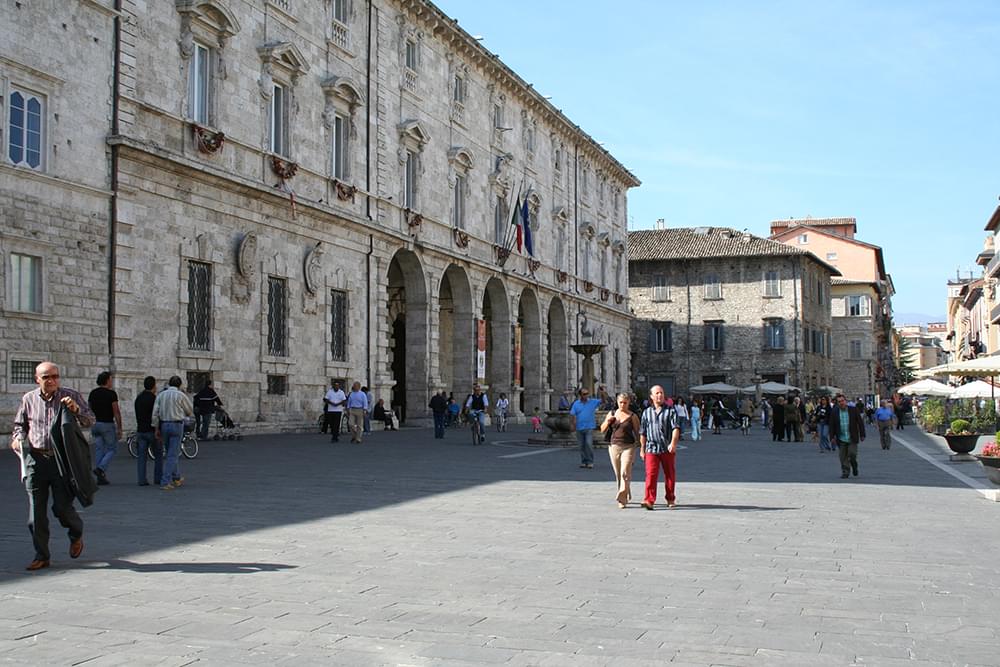
Province of Ascoli Piceno
Tucked into the southeastern corner of the Marche region, the province of Ascoli Piceno is one of Italy’s best-kept secrets. Framed by the Sibillini Mountains to the west and the Adriatic Sea to the east, this historic land blends ancient Roman grandeur, medieval elegance, rich culinary traditions, and stunning natural landscapes into a single irresistible destination. Whether you're a history lover, a foodie, an outdoor enthusiast, or a traveler seeking authenticity far from the tourist crowds, Ascoli Piceno offers a truly immersive Italian experience.
 Province of Ascoli Piceno, Le Marche
Province of Ascoli Piceno, Le MarcheA Timeless City: Ascoli Piceno
The capital city, also named Ascoli Piceno, is an architectural treasure chest. Known as the *City of Travertine*, its historical center is constructed almost entirely from this pale, glowing stone. The heart of the city is Piazza del Popolo, widely regarded as one of the most beautiful squares in Italy. Flanked by arched porticoes and the majestic Palazzo dei Capitani, the square is a masterpiece of Renaissance harmony.
Just steps away lies Piazza Arringo, another elegant square that hosts the Duomo of Sant’Emidio, a Romanesque cathedral built on the site of a former pagan temple. The interior features splendid frescoes, a crypt, and a peaceful cloister. Ascoli Piceno’s layered past stretches back to Roman times, evidenced by landmarks like the Solestà Bridge and Roman Theater, still visible in the city.
Medieval Beauty and Artisan Tradition
Ascoli Piceno is a city that lives and breathes its history. Walking through its narrow alleys feels like stepping into a different century. Gothic towers pierce the skyline—Ascoli once had over 200 of them—and ornate churches like San Francesco or Sant’Agostino are scattered throughout.
Artisanal traditions are strong here, particularly ceramics, lacework, and goldsmithing, with workshops and boutiques maintaining skills handed down through generations. Visit in July and you can witness the spectacular Quintana festival, a vivid medieval joust and parade that revives 15th-century pageantry with remarkable accuracy and local pride.
Culinary Delights of the South Marche
The province’s cuisine is every bit as rich as its history. The star of the local table is the legendary Oliva Ascolana, large green olives stuffed with a spiced meat filling, breaded and deep-fried until golden. These addictive morsels are best enjoyed with a glass of local Rosso Piceno wine.
But the delights don't end there. Expect to find homemade pasta dishes like vincisgrassi, truffle-scented delicacies from the nearby mountains, and hearty meat dishes such as agnello fritto (fried lamb). The area is also famous for high-quality olive oil, often made from centuries-old trees scattered throughout the hills.
Sweet tooth? Try funghetti di Offida, anise-scented meringue-like cookies from the hill town of Offida, or ciambelline al vino cotto, rustic wine biscuits baked for celebrations.
Hilltowns, Vineyards, and Coastlines
Outside the capital, Ascoli Piceno province reveals a quieter, bucolic charm. Hilltop towns like Offida, Acquaviva Picena, Castignano, and Ripatransone offer cobbled streets, panoramic views, and small-town warmth. Offida, a member of the "Borghi più belli d’Italia" (Italy’s Most Beautiful Villages), is known for its lace-making tradition and the enchanting Santa Maria della Rocca church perched dramatically on a cliff.
Wine lovers will rejoice in the Piceno hills, where Rosso Piceno Superiore and Passerina wines are produced. Many local wineries offer tastings and tours, pairing great wine with breathtaking scenery.
Just a short drive east brings you to the Adriatic coast and the charming seaside towns of San Benedetto del Tronto and Grottammare, known for their palm-lined promenades, golden beaches, and seafood cuisine.
Nature, Hiking, and Outdoor Adventures
Nature lovers can explore the Sibillini Mountains, a dramatic national park ideal for hiking, cycling, and nature photography. Legends abound here—the mountains are named after the ancient Sibyls, mythical prophetesses said to dwell in the caves. Trails lead past alpine meadows, deep gorges, and ancient shepherd villages.
To the south, the Monti della Laga and the Tronto Valley offer more hiking opportunities and picturesque drives. Spring and autumn are the best seasons to enjoy these landscapes in all their colorful glory.
Festivals, Culture, and Warm Hospitality
Ascoli Piceno doesn’t put on a show for tourists—it lives its culture daily. The Quintana, carnival parades, vintage car rallies, harvest festivals, and olive oil fairs are mostly for the locals, which is exactly why they feel so authentic. The people of Ascoli Piceno are warm, proud, and eager to share their stories and traditions with respectful visitors.
In Summary
Ascoli Piceno is the kind of place that captures hearts quietly but completely. It's not about ticking off landmarks—it's about savoring life at a slower pace, immersing yourself in beauty, and discovering the deep, often unsung soul of Italy.
Whether it’s walking across a Roman bridge at sunset, enjoying a plate of stuffed olives with local wine, or listening to church bells ring in a medieval piazza, every moment here feels meaningful. For those who want more than just a vacation—those who seek connection, tradition, and unforgettable flavor—Ascoli Piceno is a place that delivers, and then some.







